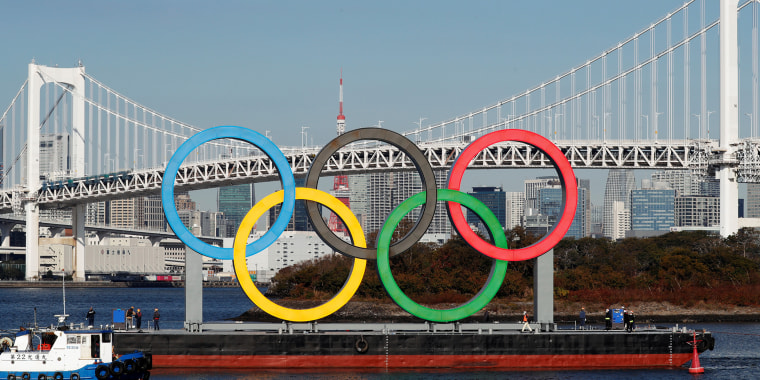At the opening ceremony of the 2022 Beijing Winter Olympics, the rings symbolizing the Games seemed to emerge from a block of ice.
The interlocking rings of the Olympics are a symbol nearly as old as the Games themselves.
The Olympic ring symbol was originally created in 1913 by Pierre de Coubertin, the founder of the modern Olympic Games, when he drew the colored rings at the top of a letter he’d written, according to the International Olympic Committee. The first Olympics was held in 1896.
Here are some more facts about the Olympic rings.

What is the meaning of the Olympic rings?
The five rings represented the parts of the world — Africa, Asia, Australia, the Americas and Europe — that were then, in Coubertin’s words, “won over to Olympism and ready to accept its fertile rivalries.”
What are the colors of the Olympic rings?
Traditionally, they appear in five different colors on a white background (though they can also be displayed individually or as a singular color). The colors of the Olympic rings from left to right are blue, yellow, black, green and red.
Why are the Olympic rings linked?
Each of the Olympic rings is equal in dimension. In formation, they’re interlaced with one another, with three rings on top and two on the bottom. The connection of the rings was designed to embody a unified world. Not only do they represent the union of continents but the meeting of athletes from around the world at the Olympic Games.
They also signify a bond created by the shared goals of Olympism, which are highlighted in the Olympic Charter. The three core values of Olympism are excellence, friendship and respect. Olympism promotes the fitness of mind and body, teamwork and care for humanity. It proclaims the right for all types of people to participate in the Games — and live — without discrimination. Olympic activities are designed to foster sport, culture and education with an eye toward building a better world.
What do the colors of the Olympic rings symbolize?
You may be wondering, what color represents each continent in the Olympic rings? Many people mistakenly think that the Olympic rings’ colors represent individual continents, but Coubertin’s idea was that when combined, the six colors in the Olympic rings (including the white background) would represent all the national flags of the countries that participated in the 1912 Olympic Games in Stockholm and, ultimately, to “reproduce those of all the nations without exception."
Since 1912, many more countries have joined in the Games, but more than a century later, the Olympic rings remain a powerful symbol of the Olympic Games.


